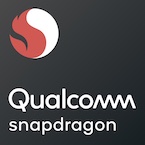Hey guys, so MediaTek has done some amazing work in mobile chipsets. It has already announced its MediaTek 1000 SOC for flagship smartphones. And at the beginning of this year, Oppo announced the Oppo Renu 5 Pro 5G with the Dimensity 1000 SOC. Although as of now, the difference between the Dimensity 1000 & 1000L is unknown. Now the Taiwanese OEM seeks to cover the premium Midrange sector of the same market with the new 800 series and is in direct competition with the Snapdragon midrange 5g chipsets.
Snapdragon 765G VS Mediatek Dimensity 800 5G


| Processor | MediaTek Dimensity 800 5G | Qualcomm Snapdragon 765G |
| Family | Dimensity | Snapdragon |
| Part number(s), S-Spec | MT6873V | SM7250-AB |
| Lithography | 7 nm N7 | 7 nm LPP EUV |
| Cores | 8 | 8 |
| Threads | 8 | 8 |
| Base frequency | 2.0 GHz | 1.8 GHz |
| Turbo frequency | – | 2.4 GHz |
| Energy cores | 4x ARM Cortex-A55 @ 2.0 GHz | 6x ARM Cortex-A55 @ 1.8 GHz |
| High-performance cores | 4x ARM Cortex-A76 @ 2.0 GHz | 1x ARM Cortex-A76 @ 2.4 GHz 1x ARM Cortex-A76 @ 2.2 GHz |
| Cache memory | 2 MB | 1 MB |
| Max memory capacity | 16 GB | 12 GB |
| Memory types | LPDDR4x-2133 | LPDDR4X-2133 |
| Max # of memory channels | 2 | 2 |
| Max memory bandwidth | 17.1 GB/s | 17.06 GB/s |
| TDP | 10 W | 8 W |
| GPU integrated graphics | ARM Mali-G57 MP4 | Qualcomm Adreno 620 |
| GPU execution units | 4 | 3 |
| GPU shading units | 64 | 192 |
| GPU base clock rate | – | 750 MHz |
| GPU max clock rate | 850 MHz | 750 MHz |
| AnTuTu | 325,780 | 330,590 |
| (Android 64-bit) Geekbench 4 single core |
2,507 | 2,578 |
| (Android 64-bit) Geekbench 4 multi-core |
8,150 | 7,053 |
| (Android) Geekbench 5 single core |
512 | 556 |
| (Android) Geekbench 5 multi-core |
1,999 | 1,756 |
| (SGEMM) GFLOPS performance |
67.9 GFLOPS | 70.56 GFLOPS |
| (Multi-core / watt performance) Performance / watt ratio |
815 pts / W | 882 pts / W |
The Dimensity 800 chipset is a mid-range solution with integrated 5g mode that is designed to bring dual-mode 5g capabilities to low price smartphones. So now let’s continue with our comparison. First, let me tell you both are built on a seven-nanometer process.
CPU
As for CPU, the MediaTek Dimensity 800 5G has four big ARM Cortex-A 76 cores clocked at up to two gigahertz paired with four little ARM Cortex-A 55 cores clocked at up to two gigahertz whereas Qualcomm Snapdragon 765G has a prime core that goes up to 2.4 gigahertz and another performance score that reaches 2.2 gigahertz. The six Cortex-A 55 based efficiency cores are clocked at up to 1.8 gigahertz. Both are not using the newer flagship ARM Cortex-A 77 core, but this is what differentiates the flagships from the mid-range, at least on MediaTek and Snapdragon.
In conclusion, MediaTek is having more performance cores, meaning it will improve app and game launch times and improves multi-threaded performance as well. So all in all MediaTek has this round in pocket.
GPU
In terms of GPU performance, the dimensity 800 5G has four cores of Arms Mali-G57 MP4. The graphic unit is the same class as the one in the dimensity 1000 with fewer cores and for Snapdragon 765G chipset it gets an Adreno 620 GPU, I don’t actually know how well managed and will perform with four cores. So we will consider this as a draw or you can decide for yourself which one is better.
AI
when it comes to AI MediaTek CPU 3.0 has four cores consisting of three different core types in its design, and this enables the dimensity 800 5G to provide up to 2.4 TOPS that is Tera Operations Per Second of AI performance, whereas the Snapdragon 765G chipset features the hexagon 696 DSP, upgrading it from the hexagon 688 on Snapdragon 730, the fifth-generation AI engine on Snapdragon 765G offers 5.5 TOPS. So in AI tasks, Snapdragon 765G is better than MediaTek 800 5G.
Camera Optics
The company proclaims dimensity 800 5G as a flagship-level image signal processor, and it supports up to four cameras with support for 64-megapixel images or dual cameras of 32 plus 16 megapixels with AI capabilities. As for Snapdragon 765G, the spectra 350 ISP allows the chipset to support a single camera that has up to 192 megapixels and dual cameras of 22 plus 22 megapixels. It also supports multi-cameras.
Display
The dimensity 800 series supports a Full HD plus display with a refresh rate of up to 90 hertz whereas the on-device resolution on Snapdragon 765 powered phones will support Quad HD plus with 60-hertz refresh rate and full HD plus resolution with the 120-hertz refresh rate.
Connectivity
The new processor touts the Helio M70 integrated 5G Modem with sub-six gigahertz support don’t expect mmWave 5g here too much like the flagship dimensity 1000 while support for millimeter-wave 5g is absent. This doesn’t matter as much as it seems because mmWave 5g is only a reality in a country like the US for now. Japan and South Korea will also have mmWave 5g networks this year. The dimensity 1000 isn’t intended for such markets. The modem enables download speeds of 3.5 Gbps and upload speeds of 1.25 Gbps. But unlike the flagship chipset, the dimensity 800 doesn’t pack 5g plus 5g dual sim support.
On the other hand, the Snapdragon 765 is integrated with an X52 5G Modem that promises 3.7 Gbps 5g download speeds and 1.6 Gbps 5g upload speeds over sub six gigahertz and mmWave. On 4g LTE, the downlink is 1.2 Gbps and the uplink is 210 Mbps.
Conclusion
The MediaTek SOC seems to be a strong competitor to the Qualcomm Snapdragon 765 and 760 5G. As it will likely have a better CPU performance and a competitive GPU implementation but this falls behind in some tasks but where MediaTek lacks the most is in the developer support I think this will change soon enough if MediaTek continues to perform the same way so this was a quick comparison of snapdragon 765G and MediaTek 800 5G Chipset. Do you love to read articles related to technology? If yes then Checkout Homepage.